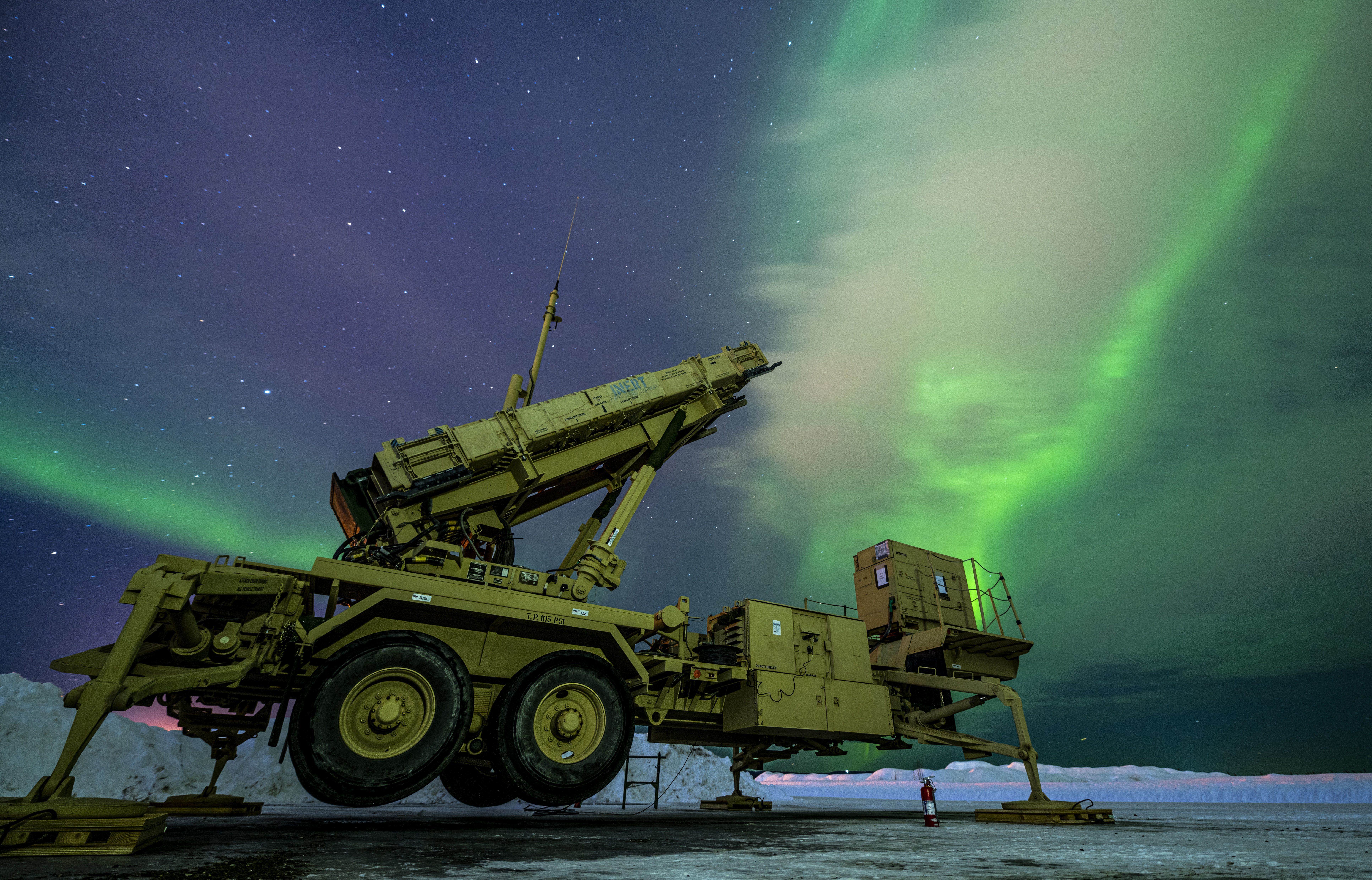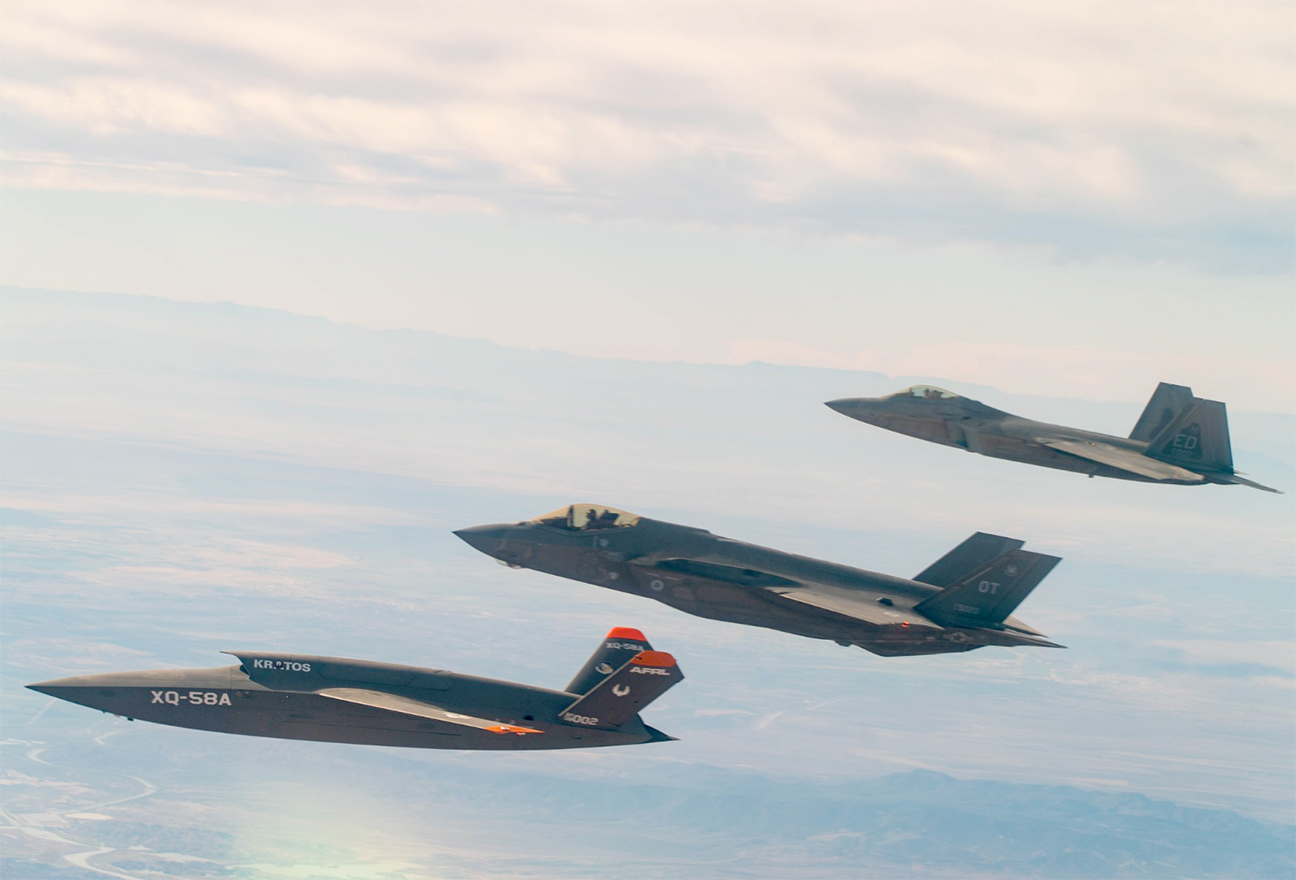Eielson Air Force Base, Alaska—The Army brought its Patriot surface-to-air missile system and short-range Avenger air defense system to Alaska for the first time to take part in the state’s largest joint force exercise, Arctic Edge, which wrapped up March 16.
The U.S. Northern Command exercise—and the inclusion of the Patriot and Avenger systems—were in the works long before Russia launched its war in Ukraine and caused tensions to skyrocket around the globe. But having the ground-based air defense systems in Alaska sends a clear message to adversaries who might consider striking the homeland.
“Having air defense forces in Alaska in cold weather times proves that we can do it,” said Army Maj. Gen. Frank M. Rice, commander of the South Carolina National Guard’s 263rd Army Air and Missile Defense Command.
“It sends a message to not only our adversaries but to our allies that we are willing and capable of defending the homeland,” Rice told Air Force Magazine during a recent visit to the base.
Officially known as the Phased Array Tracking to Intercept of Target, the Patriot has been heavily used in the U.S. Central Command area of operations. Arctic Edge was the first time the system had been tested in extreme cold. The Florida National Guard’s Avenger air defense system also figured in the exercise, tasked with defending a drop zone from cruise missiles roughly a 40-minute drive away from where the Patriots are set up on another remote section of the base.
Some of the Soldiers participating had never seen snow before, let alone minus 30-degree temperatures, yet they took turns manning the equipment 24 hours a day.
“Being that this is such a different environment, such a rigid environment, the equipment has issues,” Rice said. “We’re looking at training issues—things that we have to do differently here than we would at home.”
One of the lessons learned early on was that everything in the Arctic takes longer. The Patriot needs a level, stable platform to operate, but that didn’t exist on site. The Army began rotating small groups of Soldiers to Alaska in 2018 to plan the defense design, Rice said. But because the ground is frozen for so much of the year, there is a very small window of time in which construction can take place.
“All construction happens here in the two-and-a-half months of summer before the ground freezes again,” Rice said. To prepare for the exercise, Army North built a concrete platform to hold the system, driving rods into the ground during the summer then placing a narrow 4-foot flag pole on top for snow plows to spot the rods once they were covered in snow.
Traveling the icy roads took 50 percent longer, leading to the remote area of Eielson where the various components of the Patriot MIM-104 air defense system were set up on the new concrete pad—even though the area had already been cleared by plows and sat surrounded by four-foot walls of snow—said Capt. Robert Mock, commander of the Texas National Guard’s 5th Battalion, 52nd Air Defense Artillery Regiment, Alpha Battery as he walked through a waist-deep trench in the heavy Alaskan snow. The battery’s Soldiers dug the trench so they could get from the radar system and command center to the launcher itself.
“As you train into an environment, you can get faster, but the first time you have to do it slow because there are slip and fall hazards everywhere,” Rice said. “It’s such a different environment from what we normally operate in that it takes some learning, and we’re making those gates.”
Mock said each fire unit can hold up to eight launchers at a time, but the battery was directed to bring a minimum engagement package, which included just two launchers
The Patriot fires a solid-fuel interceptor capable of destroying tactical ballistic missiles, cruise missiles, or aircraft, with a range in excess of 60 miles, according to the Missile Defense Agency. Avenger, on the other hand, is intended for shorter-range, low-altitude air defense. It is equipped with a 50-caliber machine gun and two 360-degree rotating turrets with two missile pods capable of holding up to four Stinger missiles.

Lt. Col. Tina Madovoy, commander of the 265th Air Defense Artillery Battalion, praised the Soldiers’ ability to overcome the harsh conditions, noting that in less than a year, some of the battalion went from operating at the Army’s National Training Center in Southern California, where temperatures routinely hit 115 degrees, to the Arctic, where temps dipped to about minus 20 at night.
“We knew things were going to be more challenging coming up here,” Madovoy said. “Everything is harder to do with the cold—it’s just realizing how difficult it is to overcome some of the challenges. But our Soldiers are very innovative, and creative, and very capable. And we’ve overcome everything we’ve had to do so far.”
Capt. Eric Grant, the logistics officer with the 1st Battalion, 265th Air Defense Artillery Regiment, said that prior to the exercise, the Florida Guard spent months winterizing the equipment it would bring to Alaska, to include pre-installed heaters and battery maintainers.
“So, it’s not stock. It’s not typical. It was one of the largest Arctic, I guess, installs in the state of Florida to date, and all of this Arctic equipment will stay on the vehicles in case we do have to come back for another exercise.”
During the exercise, the ground-based air defense systems integrated with the F-22 Raptors on alert as part of U.S. air sovereignty missions; the air operations center; the Navy’s USS Curtis Wilbur guided-missile destroyer, which was providing command and control, and Canadian mid-range radars based out of the border town of Beaver Creek. The systems tracked F-16s from the Ohio Air National Guard’s 180th Fighter Wing, which deployed to Joint Base Elmendorf-Richardson, Alaska, along with some 100 Airmen to provide simulated adversary air.

The objective during Arctic Edge was to work on tactics, techniques, and procedures for operating in such cold, harsh conditions, but officials did not rule out a live-fire exercise in the future.
“I don’t think that we’re limited in the scope of some of the things that we want to do in working together,” Lt. Gen. David A. Krumm, commander of the Alaskan Region of the North American Aerospace Defense Command, told Air Force Magazine. “I would just say that we want to make this larger. We want to make it more integrated.”
Krumm said the U.S. knows how to do missile defense, air defense, and ground defense, but that it is still working through exactly how to do all of those things in the Arctic region. “We have a very robust air defense with NORAD being here for so many decades,” he said. “This was just a very unique opportunity for us to integrate the maritime and land-based assets as well.”
That integration is key to defending the homeland, he emphasized.
“We are very fortunate this year, for the first time ever, to be able to get some of the air defense artillery assets up here to work together with our air operations center, with our fighter aircraft airborne,” he said. “We were able to operate and organize a common operating picture that allowed us to seamlessly work together to integrate ground-based air defenses, or GBAD, along with our air defenses, and for our pilots and our operators to train and work together in a different environment.”
Arctic Edge included some 1,000 U.S. and Canadian military personnel from more than 35 units. It’s linked to several other service-specific exercises that took place concurrently between February and March, including the National Guard’s Arctic Eagle, the U.S. Army’s Joint Pacific Multinational Readiness Capability (JPMRC) exercise, and the U.S. Navy’s ICE-X.








